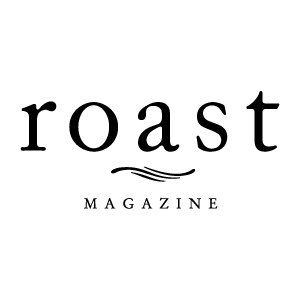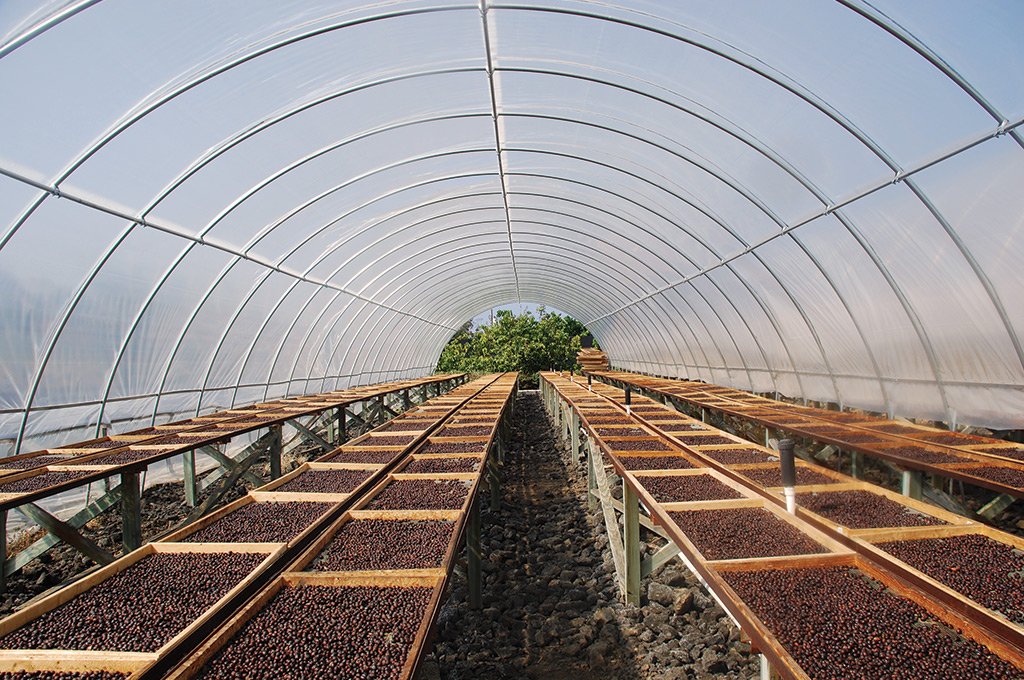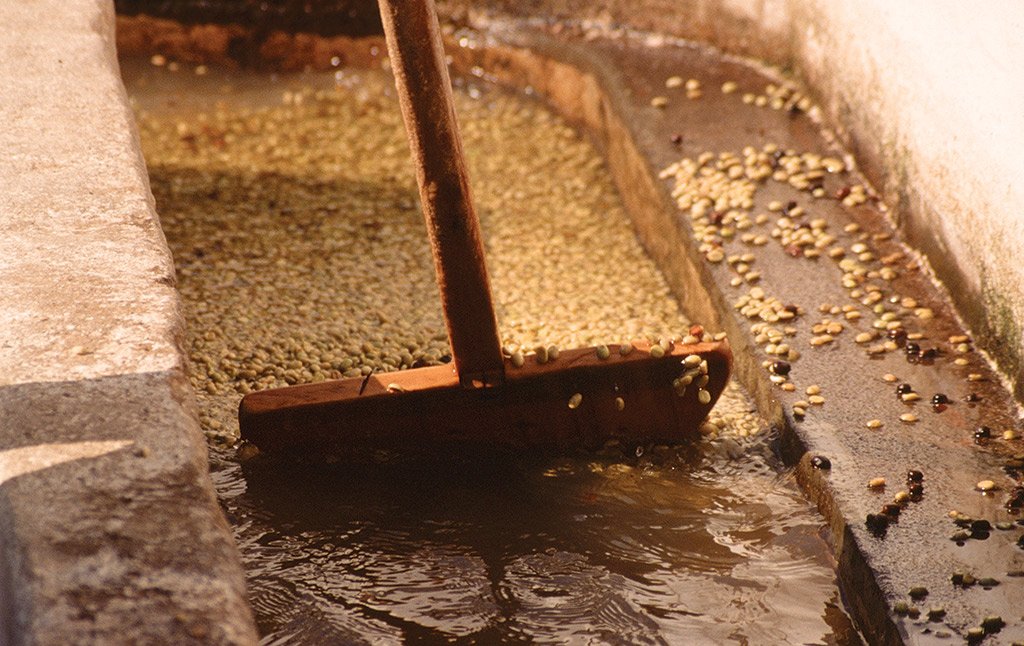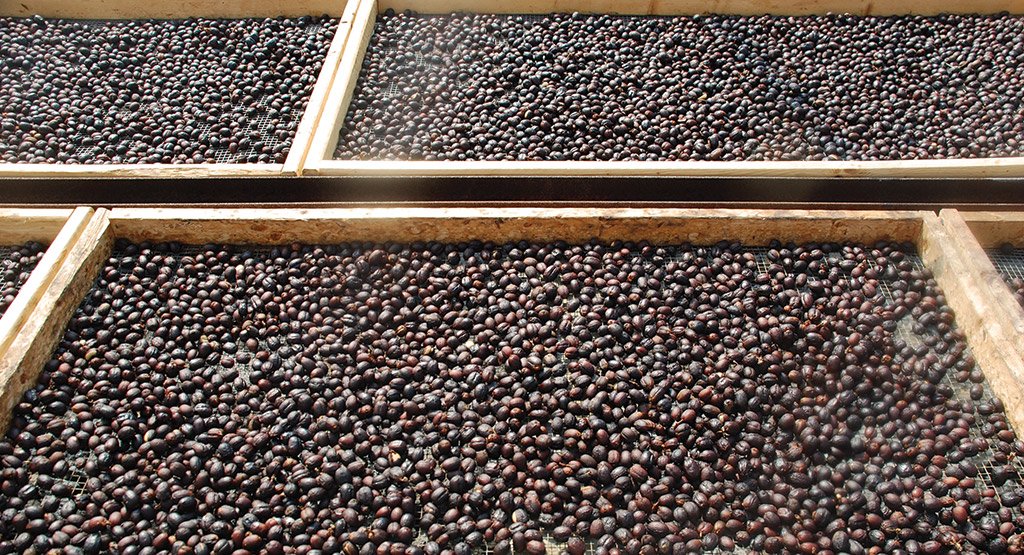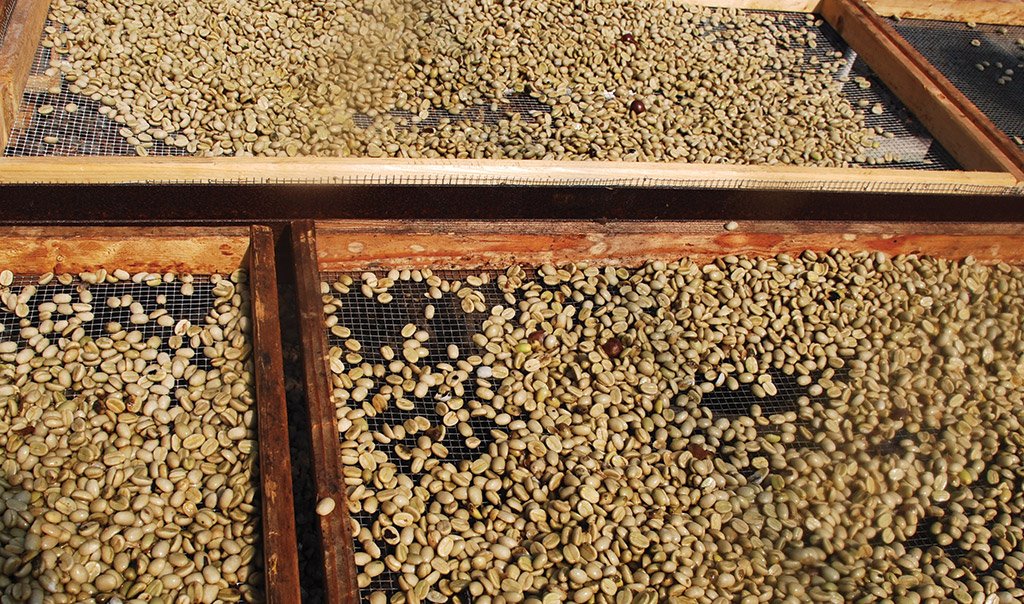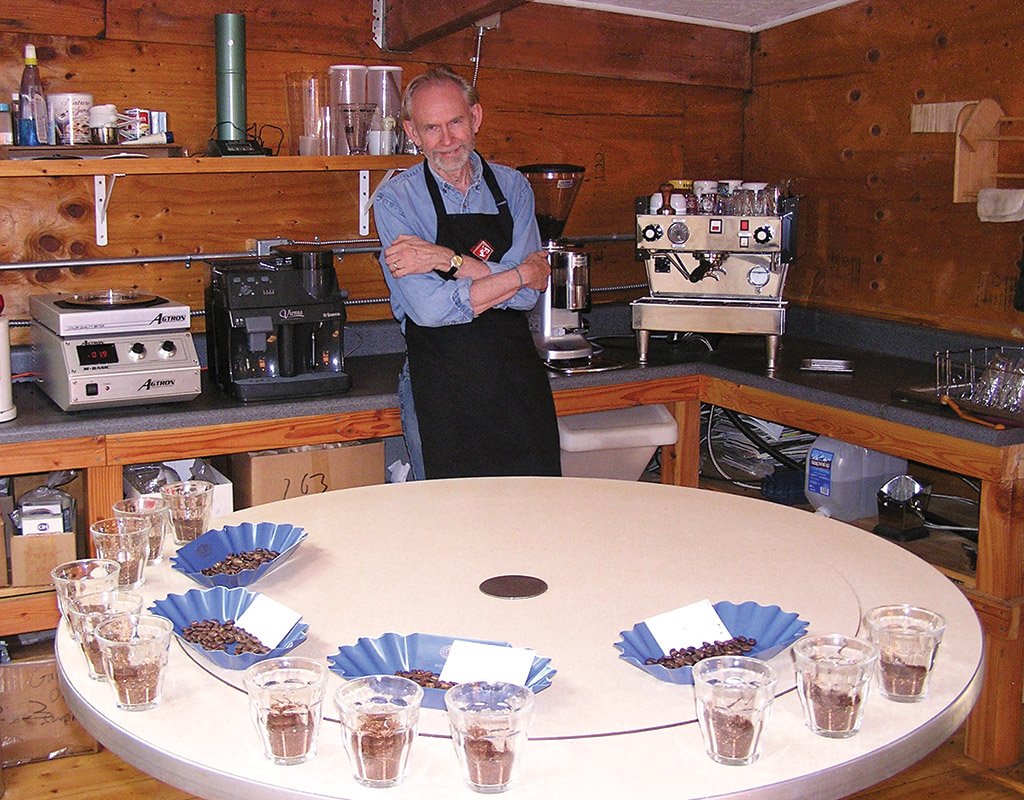Coffee Review: The World & the Cupping Table—25 Years of Change
By Kenneth Davids
Coffee Review has been reviewing coffees and reporting in depth on the world of specialty coffee since 1997, making this our 25th year of slurping, spitting and writing. Over those 25 years, we have published reviews of thousands of coffees, tasted tens of thousands more, and produced more than 350 in-depth monthly reports on coffee-growing regions, processing methods, tree varieties and roaster issues.
But aside from URLs replacing phone numbers in our reviews, what in coffee has changed over these 25 years, particularly as seen from the perspective of our cupping table? What has not changed?
Our basic method—blind testing coffees using formal professional protocols—has not changed. Nor has our aspiration to report on what we taste as honestly as we can, with as little influence as possible from fashion and ideology. Our larger mission has remained the same as well: raising awareness of coffee as a specialty beverage worthy of connoisseurship, while elevating the status and well-being of those who work in coffee, particularly those who grow it.
So, what has changed? In the larger specialty coffee world, it would seem, almost everything. Our engagement with a few of those changes, and occasionally our struggles with them, is sketched out in what follows.
From Predictable Classics to Challenging Experiments
When we surveyed El Salvador coffees in 1997, in one of our very first reports, all of the coffees available for review were washed or wet-processed coffees of the general style then associated not only with El Salvador, but with the world of fine coffee generally.
We were able to evaluate those El Salvadors in the light of general, widely shared criteria for washed coffees while acknowledging certain subtle expectations particularly associated with El Salvador. Fine washed coffee, in which the fruit is removed from the bean in careful stages soon after picking and before drying, aims to project the purity of that coffee without influence from the steps involved in fruit removal. Any impacts on taste caused by these acts of fruit removal and drying, collectively called processing, were likely to be branded in 1997 as taints or faults. These taints and faults were taken as failures to achieve what the coffee world then defined as “quality,” which meant, essentially, consistency and predictability.
The Fading Connection Between Origin and Cup Character
Those who follow coffee know what happened next. The connection between origin—growing country and region—and how one expects a coffee to taste began to break down as producers turned away from the traditional in processing method and tree variety to the new and different. Two decades after our 1997 report on El Salvador, for example, in a 2019 report, only 35 percent—about one-third—of the El Salvador coffees we cupped were classic washed coffees of the style once solidly associated with that country. Of the remaining samples, 39 percent were natural-processed coffees (dried in the fruit) and 26 percent were honey-processed (dried in part of the fruit). Both methods, of course, encourage subtle to dramatic differences in cup character from coffees produced by the washed method. Many of the natural-processed coffees we cupped in 2019, even the better ones, probably would have been classified as “tainted” by green coffee buyers in 1997.
Balancing Innovation and Tradition
Consequently, one of the great challenges of reviewing coffees in recent years is finding ways to honor the traditional in coffee while simultaneously honoring innovation and experimentation, particularly with regard to how a range of processing methods influence the cup. And, of course, communicating these new and different expectations to readers.
Fortunately, we had some practice at such flexibility early on, because even in 1997, certain coffee types that many coffee drinkers enjoyed deviated from the classic washed norm. Sumatra coffees, for example, traditionally displayed a musty-fermenty character often glamorized by the term “earthy,” a cup fault that, in 1997, would have gotten an El Salvador coffee thrown off the cupping table. Yet, many coffee drinkers loved Sumatras. We resolved this contradiction by rewarding Sumatras in which the earth notes were basically fresh, like just-turned humus, for example, or wet fallen leaves, while punishing those that displayed a sharp, damp-basement mustiness.
We achieved a similar though sometimes more precarious solution for “natural” or dried-in-the-fruit coffees that showed suggestions of fruit ferment—in those days, usually coffees from Yemen or eastern Ethiopia. Here, we looked (and still look) for fruit that displayed what we came to call “clean” ferment: sweet, wine-like or brandy-like ferment tones, free of excessive bitterness or compost notes.
The New Anaerobic Challenge
Nevertheless, none of such parsing and balancing quite prepared us for the first samples of coffee we received several years ago that had been subject to versions of what is now often called anaerobic processing or carbonic maceration. Many of these early anaerobic samples came across as exuberant, unapologetic exercises in creative taint. Anaerobic innovators have managed to quiet down some of the most challenging of these taste characteristics while maintaining the originality, complexity and fruit encouraged by the method. And we have done our best to work the more extreme anaerobic samples into our reviewing system in a way that will point coffee adventurers toward their twisty, fragrant surprises while warning off purists and indirectly suggesting they might be happier with, say, a nice conventionally washed El Salvador.
A Shift from Innovation at the Consuming End to Innovation at Origin
Before going on to the subject that has consumed us the most over the years—how to apply a 100-point rating system to coffees that express themselves so differently (not to mention the challenges and puzzles of how to rate coffees in the first place)—we need to recognize an often-overlooked aspect of the latest storm of experimentation by coffee producers.
Until very recently, most product innovation in coffee happened in consuming countries, not in producing countries. Farmers were relegated to producing predictable “quality” versions of familiar coffee types associated with their respective regions. A good Costa Rica was expected to taste like a good Costa Rica, for example, a good Ethiopia Yirgacheffe like a good Ethiopia Yirgacheffe, and so on.
Trends in product differentiation, in those days, were carried out primarily by roasters and retailers. The popularity of espresso and its beverage spin-offs, for example, irrevocably changed the coffee world, though not particularly to the advantage of producers. The same could be said for the current popularity of cold brew.
Dark Roasting as a Consumer-End Product Differentiator
And, of course, the practice of dark roasting all coffees, regardless of style or origin, can also be seen as a product differentiation move carried out on the consuming end of the supply chain. In, say, 2000, how could roasters demonstrate to coffee-naive, inexperienced consumers that “specialty” coffees tasted dramatically different from coffees sold in supermarkets or the corner diner? These specialty roasters bought far better green coffees, of course, but a surer solution was to dramatize the difference by roasting all their coffees dark, no matter where they came from. And it wasn’t only Peet’s and Starbucks that dark roasted everything around 2000. So did scores of smaller roasting companies.
When we founded Coffee Review, we often needed to search for medium to medium-dark coffees that gave us something to write about—coffees that provided a level of differentiation exceeding the distinctions in style or darkness of roast that dominated the specialty marketplace at the time. Over the years, we have done our best to identify what we feel are the best dark-roasted coffees—those that celebrate both the character of the green coffee and the chocolaty, bittersweet appeal of a darker roast—although that, too, has been a bit of a challenge when it comes to assigning ratings.
The roast pendulum has swung back the other way, of course, first gradually, then decisively. The change from selling coffee primarily on the basis of different roast style to focusing on the sensory surprises the bean itself brings to the cup was, I believe, what ultimately liberated the current wave of creativity and experimentation among coffee producers. With subtle differences highlighted by coffee-first, lighter roast styles, and success rewarded by well-publicized high scores in green coffee competitions (and, in some cases, high ratings at Coffee Review), many small and medium-scaled coffee producers rapidly evolved from anonymous producers of premium coffees sold by grade into market-savvy, innovating boutique coffee producers, taking risks growing Geisha and other distinctive-tasting, low-volume varieties while experimenting, sometimes radically, with altering the cup through processing method.
Too Many Coddled Microlots?
This shift has its critics, however, and along the way has caused some soul-searching at Coffee Review. To what degree have our reviews encouraged a market for tiny, coddled microlots of highly differentiated coffees sold for big bucks while potentially discouraging high-quality versions of classic styles of coffee sold in larger volumes at reasonable but affordable prices? To help compensate, we have focused some our recent reports on traditional coffee types. But, on the other hand, we are dedicated to describing and rating coffees based on what we taste, not what we think we ought to taste. This commitment means that if we get a microlot sample with an original, astounding cup, we need to reward and honor it even if it sells at what seems an outrageous price. By the same token, we need to resist any temptation to flatter the producer and roaster by assigning a high score to a coffee based simply on a prestigious name or extravagant price.
And Yes, Those Ratings
The practice of assigning 100-point ratings to coffees has become so common since we debuted the practice in 1997 that, today, the coffee world hardly seems to notice the problematics of applying a language (numbers) that suggests certainty and science to the complex, subjective experience of a beverage. (I describe our broad thinking on this issue at coffeereview.com/how-coffee-review-works.)
What has changed over 25 years at Coffee Review with regard to ratings? Well, to state the obvious, the ratings definitely have gotten higher.
It’s true that back in 1997, we awarded a 93 to an apparently splendid Kenya from Willoughby’s Coffee & Tea, though we published a lot more lowball scores back then, far more than we do today. Willoughby’s, founded in 1985 by Bob Williams and Barry Levine, placed two coffees in that first 1997 Africa coffees report, the 93-point Kenya and an Ethiopia Yirgacheffe we rated 90. Willoughby’s continues to offer a Kenya and an Ethiopia, both in the same basic washed coffee style as those two samples we tested in 1997 (though now sourced from specific cooperatives and roasted considerably lighter than the 1997 samples). Nevertheless, when we tested the 2021 samples blind, both came off the table only one point higher than the versions Willoughby’s sold in 1997. My co-cupper Kim Westerman and I both had the (splendid) Kenya at 94. Kim initially had the Yirgacheffe at 93 and I had it at 90; we compromised at 91. These results are tributes to the steadiness of the Willoughby’s coffee team, as well as to the unusual consistency over the decades of the best Kenya and Ethiopia washed coffee types. But I hope it suggests that we at Coffee Review have been consistent as well.
Better Coffees and More of Them
The main reason for today’s generally higher ratings is better coffees, and more of them. We only publish reviews of approximately the top 40 percent of coffees submitted, so obviously, the more coffees we test the higher the average scores of those we publish. And, as noted earlier, most specialty coffees we tested through the early 2000s came from relatively large lots described with relatively generic language, often simply the name of the growing country and, at most, one qualifier: Kenya AA, Colombia Supremo, Guatemala Antigua, etc. Tree variety was largely ignored, and processing method taken for granted.
But today, most of the coffee lots we review are small, highly selected and clearly differentiated by both tree variety and processing method. Such precise focus usually (though not always) nets higher scores than coffees from less-differentiated, larger lots. For example, the Geisha variety of arabica, now famous for its startlingly distinctive cup, first showed up in Coffee Review in one review in 2005. Last year, in 2021, we reviewed nearly 60 Geishas—over 10 percent of all reviews we published for the year.
Yet, fine Geishas processed by the orthodox washed method are relatively easy to appreciate and describe. Their original, sometimes surprising aromatics are pleasing to most coffee drinkers and come enveloped in a familiar, seductive structure: balanced, sweetly bright, satiny to syrupy in mouthfeel.
On the other hand, some of the latest, most unorthodox trends in experimental processing are considerably more challenging in the cup and have mightily tested our rating system. Faced with a coffee expressing a particularly extravagant version of hybrid processing using anaerobic ferment, we often remark that some coffee drinkers will find the sample a 96 while others might rate it 76 (if they keep it in their mouths long enough to actually taste it). But we don’t give split grades, so we either battle through to consensus on a rating on a controversial coffee or end up taking an average.
Relentlessly Low Coffee Prices and a Temporary Respite
For our entire 25 years, we have lamented the destructive toll of unremittingly low green coffee prices on coffee distinction, on the environment, and on the well-being of smallholding farmers. Currently, coffee prices paid to producers have jumped, mainly owing to reduced supply caused by a drought and freeze in world-leading coffee producer Brazil, secondarily to the global pandemic. Unfortunately, this mainly weather-driven spell of higher prices is doubtless another chapter in coffee’s history of booms and busts. Encouraged by today’s higher prices, producers will plant more coffee, and inevitably, four or so years from now, when those newly planted trees mature, coffee prices will head back down again to unsustainable levels and stay there until another major crop failure temporarily gooses the market back up.
Most likely the only long-term solutions to the boom-bust cycle in coffee are either the revival of a cartel designed to stabilize prices through control of supply like the one created by the International Coffee Agreements in 1962 through 1972 (a very unlikely scenario), or a gradual elevation of coffee to the status of genuine specialty beverage. We are in favor of both solutions, but we can only help, in a small way, with the second.
Some observers speculate that the current jump in price for all green coffees will discourage production of the highly selected and differentiated small lots of coffee that appear so frequently in our reviews. The theory runs that producers will be content to sell larger lots of ordinary coffee at decent prices and forgo the hassles involved in producing small, selected lots of distinctive coffee.
Personally, I do not think this will happen on any major scale. I expect that leading producers and exporters will gratefully take the latest long-deserved price increases for their fine yet less exceptional coffees, while continuing to swing for the fences with prestigious, differentiated small lots that will make and maintain their names, brands and reputations.
The Ultimate Threat
Hovering in and over everything, of course, is climate change and the plague of coffee-influencing disasters it has set off or exacerbated: the Latin American coffee rust epidemic starting in 2010, coffee industries in Malawi and Zambia virtually destroyed by drought, Caribbean coffee industries crippled by an increase in hurricanes and tropical storms, exceptional new weather patterns everywhere, and the pressure to grow coffees at higher and higher elevations to offset warmer temperatures.
Among the more heartening developments in response to climate change are recent efforts by World Coffee Research and other coffee agencies to produce hybrid varieties of arabica that are both disease resistant and distinctive in the cup. Not too long ago, cup character usually appeared to be an afterthought among agronomy-minded scientists busy developing new disease-resistant coffee varieties. What has changed their minds, of course, is the success of varieties like Geisha in attracting much higher prices in the marketplace and, generally, the growth of a market in which cup distinction is rewarded by higher (sometimes considerably higher) prices. In the next two years, we hope that enough coffees produced from the newly developed F-1 varieties (touted as disease-resistant and distinctive in the cup) will be available on the retail market for Coffee Review to mount a tasting report focused on them.
Stay healthy and stay tuned in for our 26th year of publication, which is sure to be crowded with innovation, challenge and, of course, some very fine and surprising coffees.
*****
KENNETH DAVIDS is a coffee expert, author and co-founder of Coffee Review. He has been involved with coffee since the early 1970s and has published three books on coffee, including Home Roasting: Romance and Revival and Coffee: A Guide to Buying, Brewing and Enjoying. His latest book, 21st Century Coffee: A Guide, was released in January 2022 and is currently available through links on coffeereview.com.
Advertisement

